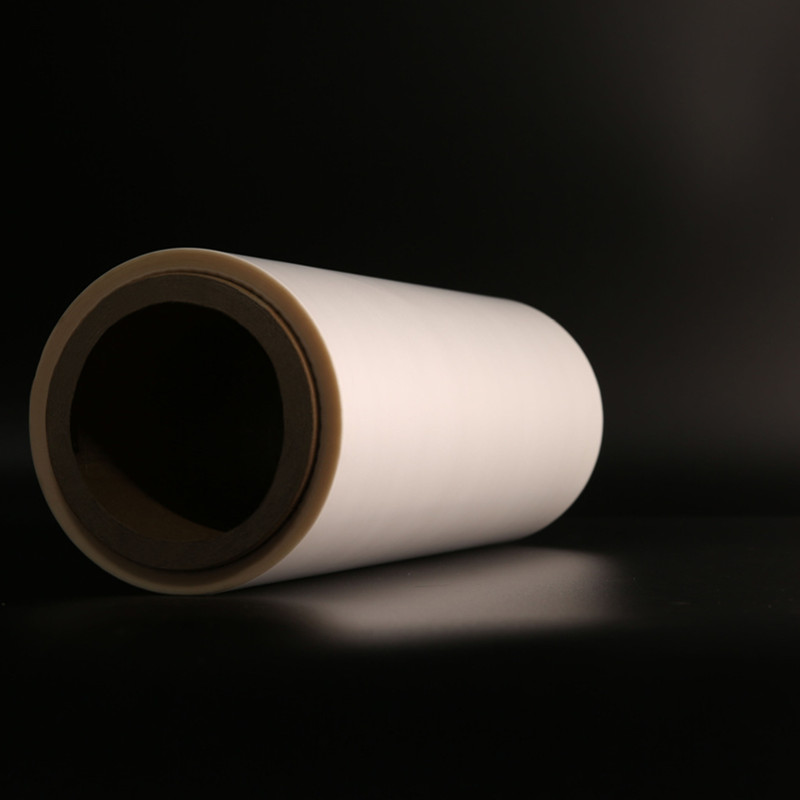
Film coating is basically achieved through the use of pre coated film. Due to its short usage time and frequent issues, process practice has shown that the main factors affecting the quality of pre coated film coating are temperature and pressure. The three major factors of speed, therefore, correctly handling the relationship between the three is crucial for ensuring the quality of pre coating film and its impact on the production of the next process. Paper plastic coating is the comprehensive result of the physical effects of hot pressing, and temperature, pressure, and speed are the three basic factors to achieve this physical comprehensive effect. Properly handling the relationship between these three factors is the key to process operation technology.
Temperature
It is the first key to laminating. The adhesive used for pre coating is hot melt adhesive, and the temperature determines the melting state of the hot melt adhesive, the leveling performance of the hot melt adhesive, and the diffusion ability of the hot melt adhesive molecules to BOPP film, printing ink layer, paper substrate, and other three substances. At the same time, it also determines the crystallinity of the hot melt adhesive. Only by correctly controlling the temperature of the working area can the solid hot melt adhesive layer of the pre coating film on the film be completely melted into a viscous flow state, with appropriate fluidity to achieve wetting and bonding on the surface of the printed product. At the same time, it ensures instant curing after lamination, so that the laminated product has a smooth and bright appearance, good melting degree of the adhesive layer, and no creases. And it can peel off the ink. The temperature control during the laminating process also affects and determines the use of hot melt adhesive to solve the changes caused by heating, as well as the resistance to new heat. Therefore, strict temperature control is the primary key to pre coating film application. According to our practice, it is more suitable to control the temperature within the range of around 80-100 ℃.
Pressure
While correctly controlling the overlay temperature, appropriate pressure should also be used, as the surface of the paper itself is not very flat. Only under pressure can the hot melt adhesive in a viscous state fully wet the surface of the printed material during the process of driving away the air on the surface of the printed material.
The diffusion and displacement of colloidal molecules into the ink layer and between paper molecules of printed materials achieve good adhesion, forming a complete coverage of the entire surface of the printed material, making the printed material bright, fog free, with a flat adhesive layer and no creases. The bonding effect is good. Without wrinkles, increasing the pressure appropriately can fully demonstrate the thermoplastic curing function of the hot melt adhesive, ensuring that the coated product has strong resistance to various physical peeling, impact forces, and other effects during the composite process (such as indentation, hot stamping, hot melt adhesive skins, etc.) to achieve a perfect unified speed of the internal structure and surface state of the composite printed material.
Speed
Paper laminating is a dynamic composite motion, and its speed determines the time the paper plastic composite stays on the hot pressing interface, as well as the input temperature and pressure of the laminating machine, and the actual effect value on the paper plastic composite in the actual production process. When the temperature and pressure of the film coating are fixed, the change in speed will cause the film coating effect to change accordingly. Due to the limitations of temperature upper limit and pressure supply, it will only change from the direction less than the set value, and with the acceleration of speed, the decrease is significant, the hot pressing force will decline, and the composite effect will deteriorate. If the operating speed is too fast, the bonding will not be firm, and there will be fog. If it is too slow, it will be inefficient, and even foaming. So the composite operating speed determines the bonding time between the pre coated film and the printed paper. Based on our experience, it is generally appropriate to control the speed at around 10-20 sheets per minute for split paper (The speed of the electronic laminating machine should be slower due to the small size of the hot press drum.)
The actual values of the three major factors of temperature, pressure, and speed have a certain range. Due to the differences in equipment, it is necessary for us to find the optimal operating value in practice to ensure the composite effect of the pre coated film and create favorable conditions for the glue nail cover spine to not detach from the shell and not bubble in the next process. The composite of pre coated film and how to create favorable conditions for the next process (including indentation, hot stamping, wireless adhesive bonding, etc.) are also important factors worth considering in the process of using pre coated film for laminating operation. When the pre coated film is combined with paper printed products, the lower limit is 80C and the upper limit is 100C. Intuitively, based on the high brightness, no fogging, good flatness, and no bubbles of the composite after leaving the hot press drum, in such a temperature range, the hot melt adhesive can fully accept the heat from the surface to the deep inside. The modification of various raw materials mixed in the colloid can be fully exerted, and the entire adhesive layer is completely melted, producing a true and strong bond, rather than surface, shallow, and unable to withstand bending or reheating, resulting in shell detachment and foaming.
When the lower limit temperature is slightly lower, the brightness of the composite product will decrease. When the upper limit temperature slightly increases, uneven bubbles with different shapes will be formed on the surface of the film. The phenomenon of electronic laminating machine is particularly obvious. Properly mastering the critical working area of laminating temperature not only achieves good composite effect, but also makes the hot spot of crosslinking reaction close to the hot spot of hot melt colloid. The solidification of colloid is approximately hard, so it will not easily soften when it is heated again. The correct temperature control method for laminating operation is to finely grasp the laminating temperature that is extremely close to the crosslinking reaction temperature.




 WeChat QR code
WeChat QR code What's App
What's App